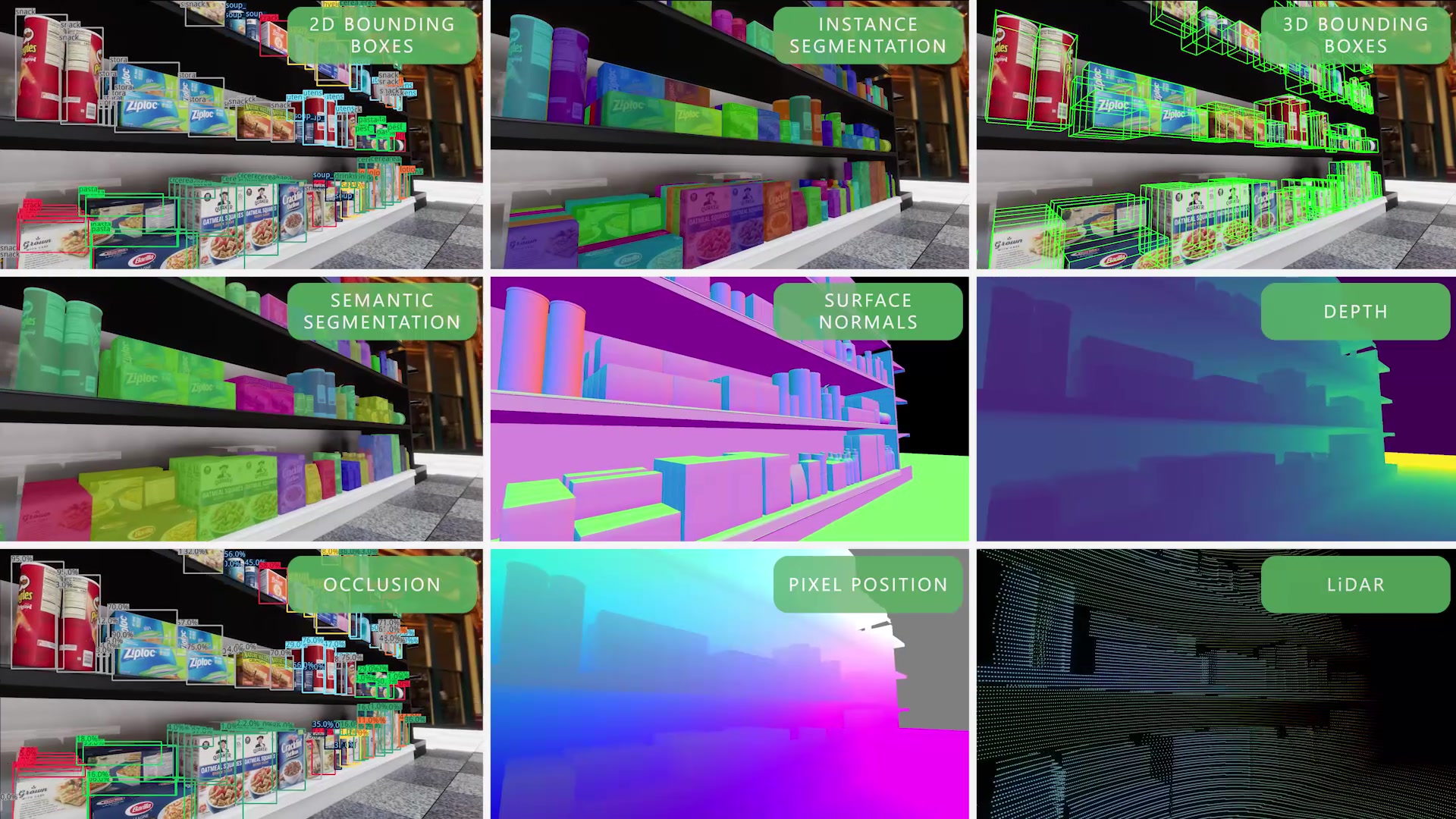
Join our Mailing List! Sign up to stay up-to-date on our latest feature release, community events, blog posts, and more!

com.unity.perceptionis in active development. Its features and API are subject to significant change as development progresses.
The Perception package provides a toolkit for generating large-scale synthetic datasets for computer vision training and validation. It is focused on a handful of camera-based use cases for now and will ultimately expand to other forms of sensors and machine learning tasks.
Getting Started with Perception Package
Quick Start Guide
Adding the Perception package to your existing project. Recommended for users already familiar with Unity and the Perception package. If this is the first time exploring our toolset, we highly recommend briefly going through the Perception Synthetic Data Tutorial below!
🌟 Perception Synthetic Data Tutorial 🌟
Ideal for those new to either Unity, the Perception package, or synthetic data in general. Detailed instructions covering all the important steps: installing the Unity Editor, creating your first synthetic data generation project, adding domain randomization, visualizing, and analyzing your generated datasets. No prior experience required.
Human Pose Labeling and Randomization Tutorial
Step by step instructions for using the keypoint, pose, and animation randomization tools included in the Perception package. We recommend that you complete the Perception Tutorial above before diving into this guide!
Frequently Asked Questions
Check out our FAQ for a list of common questions, tips, tricks, and sample code for common code patterns.
Verifying Datasets with Dataset Insights
Introduction to Unity's Dataset Insights – a python package for downloading, parsing and analyzing synthetic datasets.
Reference Documentation
In-depth documentation on specific components of the package. For the full set of feature-based documentation, take a look at the Features page.
| Feature | Description |
|---|---|
| Labeling | A component that associates a GameObject and its descendants with a set of "labels." |
| Label Config | An asset that defines a taxonomy of labels for ground truth generation |
| Perception Camera | Captures RGB images and ground truth from a Camera. |
| Dataset Capture | Ensures sensors are triggered at proper rates and accepts data for the JSON dataset. |
| Randomization | The Randomization tool set lets you integrate domain randomization principles into your simulation. |
| Output Endpoint | Currently supported output endpoints are: No Output, Perception endpoint, and Solo endpoint. |
Community and Support
For setup problems or discussions about leveraging the Perception package in your project, please create a new thread on the Unity Computer Vision forums with details such as operating system, reproduction steps, etc. If you run into any other problems with the Perception package or have a specific feature request, please open a GitHub Issue.
For any other questions or feedback, connect directly with the Computer Vision team at computer-vision@unity3d.com.
Projects using Perception!
SynthDet

SynthDet is an end-to-end solution for training a 2D object detection model using synthetic data.
Robotics Object Pose Estimation Demo

The Robotics Object Pose Estimation project demonstrates pick-and-place with a robot arm in Unity. It includes using ROS with Unity, importing URDF models, collecting labeled training data using the Perception package, and training and deploying a deep learning model.
Local development
The repository includes a test project for local development located at TestProjects/PerceptionHDRP.
Suggested IDE Setup
For closest standards conformity and best experience overall, JetBrains Rider or Visual Studio w/f JetBrains Resharper are suggested. For optimal experience, allow navigating to code in all packages included in your project. In your Unity Editor, navigate to Preferences → External Tools and check Generate all .csproj files.
License & Citation
The Perception package is licensed under Apache License Version 2.0. If you find this package useful, consider citing it using:
@misc{unity-perception2022,
title={Unity {P}erception Package},
author={{Unity Technologies}},
howpublished={\url{https://github.com/Unity-Technologies/com.unity.perception}},
year={2020}
}


